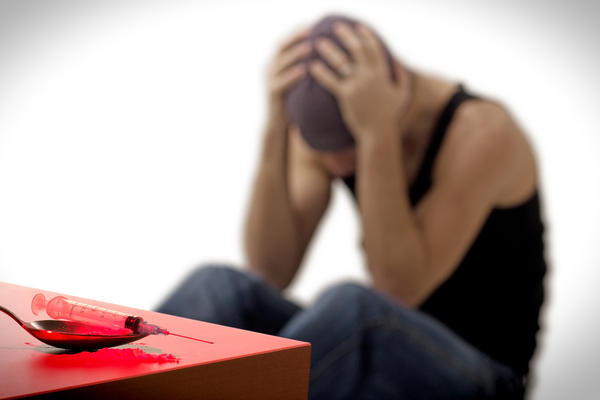Why Prescription Drug Addiction Is Growing Among Teens

By the time Jessica McDonald was 13, she had already started drinking, smoking marijuana and using Adderall — a stimulant used to treat attention deficit hyperactivity disorder — to get high. Physically abused by her father and feeling aimless, the Corona, Calif., girl quickly became an addict, racking up five DUI convictions while high on Xanax, an anti-anxiety drug.
"I had a lot of anger inside, and I was trying to numb those feelings, trying to get away from what happened," said McDonald, now 24 and the veteran of 19 stays in drug rehab facilities. "I felt like a loner and I didn't fit in at school. I wanted to have friends, and the ones I used [drugs] with were the ones who took me in. They were my friends."
In many ways, McDonald's story is timeless. But her drugs of choice — prescription pills — highlight an increasingly pervasive problem among U.S. teenagers, who are abusing such medications in record numbers.
Nearly 8 percent of youths ages 12 to 17 reported using prescription drugs for nonmedical reasons in 2010, according to the National Institute on Drug Abuse (NIDA).
The number of adolescents and young adults coming to rehab today addicted to prescription drugs is much larger than even five years ago, said Tim Chapman, who runs several treatment facilities in Orange, Calif. About 40 percent of those entering rehab now are addicted to prescription drugs, he said.
Kids start using prescription drugs for the same reasons McDonald did – to deaden difficult feelings, to fit in with their peers – but also because they believe prescription drugs must be safer because they're dispensed by doctors, Chapman said, noting that many parents leave easily accessible leftover drugs in their homes after they no longer need them.
Too easy to get, too addictive
Sign up for the Live Science daily newsletter now
Get the world’s most fascinating discoveries delivered straight to your inbox.
The most commonly abused prescription drugs include painkillers (such as the opioids OxyContin and Vicodin), sedatives or depressants (such as Xanax or Valium) or stimulants (Adderall or Concerta), according to NIDA. Part of the problem is that they're so easy to find: Enough prescription painkillers were prescribed in 2010 to medicate every American adult around-the-clock for a month, according to the U.S. Centers for Disease Control and Prevention (CDC).
"The availability of prescription pain medication and its accessibility to young people is one of the biggest problems, because they may have a sports injury . . . and before very long, they get hooked," said Dr. Bruce Goldman, director of Substance Abuse Services at Zucker Hillside Hospital of the North Shore-LIJ Health System in Glen Oaks, N.Y. "They develop a tolerance and before they know what hits them, they have a very serious drug problem. I don't think they really appreciate the addictive potential."
McDonald's mother took her to a therapist after her father's physical abuse, but that didn't stop her from continuing to abuse drugs, including OxyContin, or to hide her habit from her mother, who "didn't want to believe that I could abuse," McDonald said. Despite her downward spiral, McDonald wasn't caught until her mother noticed she was becoming emaciated, and learned she was forging checks.
But it shouldn't take that long to realize that a teenager is abusing prescription drugs, Chapman said. Unlike alcohol or marijuana, which teens may be able to function fairly normally while using, prescription abuse "is so much more obvious" because of the users' odd behaviors, ranging from mania to extreme fatigue. Other tip-offs are changes in school performance, friends and extracurricular activities.
"You're more likely to get caught within the first year of using prescription medications," Chapman said. "When you're nodding out in class because you're on an opiate, it's a different ballgame."
What parents can do
Still, by the time abuse is caught, parents have few options, including outpatient therapy (whether individual or group), or an in-patient treatment program that takes the teen out of their environment for weeks or months, experts said.
"If you're suspicious, I think it's better to err on the side of acting on it and getting a professional opinion," Goldman said. "You have to weigh the pros and cons, but the downside of not acting is losing your child . . . it doesn't seem to be much of a difficult choice."
Chapman agreed: "It's like cancer — if you find out your kid has cancer, you're going to do what you need to do at that moment," he said. With drug abuse, "You're going to have to have your kid hate you for awhile."
Can parents prevent the problem from developing in the first place? While no plan is fail-proof, the experts offered these tips:
- Lock up prescription medications such as painkillers, sedatives and stimulants.
- Keep a drug test on hand to signal your vigilance to your child.
- Get involved in local anti-drug community groups, which also signals your commitment to the issue.
- Don't be casual about your own prescription drug use.
- Talk to your kids about their friends.
McDonald, now in her second month of sobriety, wishes her mother would have cracked down harder on her instead of trying to be her friend.
"I honestly wish my mother would have disciplined me more, but she wanted to be more my friend than parent, because of what my dad did to me," she said. "I put such a pause on my life because of everything I was doing. I could have been in college and done all of these things by now, rather than be on parole and in and out of treatment."
This story was provided by MyHealthNewsDaily, a sister site to LiveScience. Follow MyHealthNewsDaily on Twitter @MyHealth_MHND. Find us on Facebook.
What are mRNA vaccines, and how do they work?
Deadly motor-neuron disease treated in the womb in world 1st










